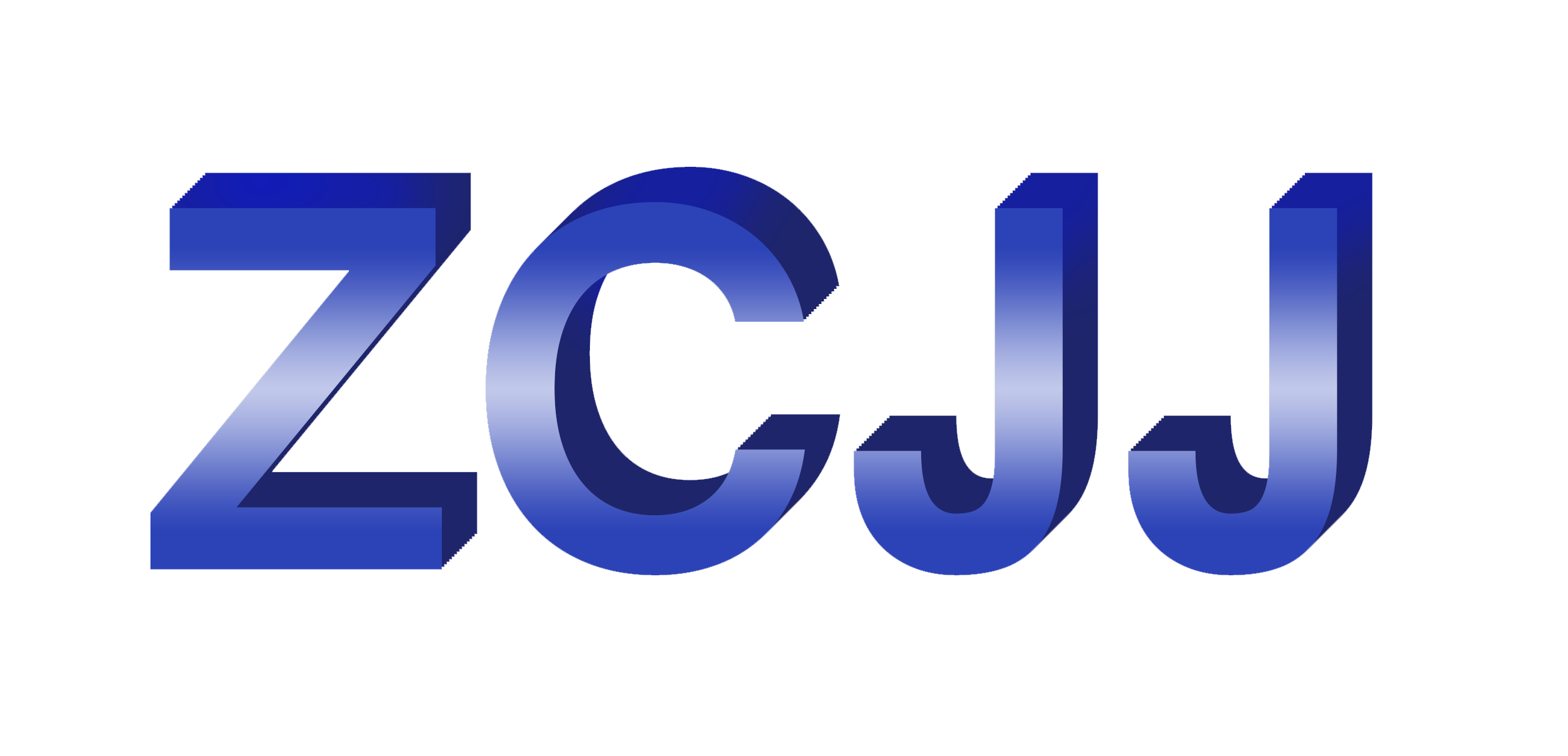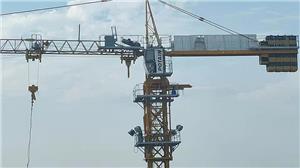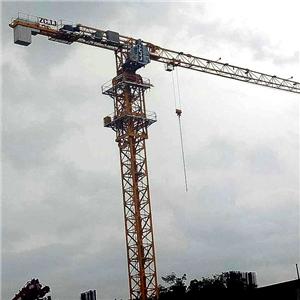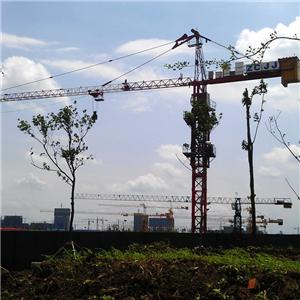Points to note when using a tower crane to avoid a tower crane accident
(1) After the tower crane is installed, the overall technical inspection and adjustment shall be carried out, and it shall be delivered for use only after the stage and the whole machine inspection has passed.
In the case of wireless load, the vertical deviation between the tower body and the ground must not exceed 4/1000.
(2) The disassembly personnel shall wear safety and protective articles, and wear safety belts when working high, and be familiar with the disassembly process and operating procedures.
(3) The lifting of towers shall be equipped with the following personnel: the project leader, the person in charge of safety, and the machinery manager who holds the certificate of production safety assessment.
Construction crane with special operation qualification certificate for construction construction installation and disassembly, lifting driver, lifting signal worker, cable worker and other special operation personnel.
(4) The track foundation and concrete foundation of the tower crane must be designed and checked, and can be used only after acceptance. Slope and drainage facilities should be built around the foundation and a certain safe distance should be maintained with the foundation pit.
(5) The connection of the components of the hydraulic lifting system must be checked before the lifting. It is strictly forbidden to turn the boom and other work when climbing.
(6) The metal structure of the tower crane, the track and the reliable shell of all electrical equipment shall have a reliable grounding device, and the grounding resistance shall not exceed 4 Ω, and lightning protection devices shall be set up.
(7) Before the operation, a comprehensive understanding must be made of the surrounding environment, driving roads, overhead wires, buildings, and the weight and distribution of components at the work site.
During the tower lifting operation, no obstacles may be found in the lifting and landing of the heavy arm rod and the radius of rotation of the tower. The safety distance from the overhead transmission wire should comply with the regulations.
(8) The commander and operator of the tower crane must be certified for duty, and the signal of the commander shall be strictly executed during the operation. If the signal is unclear or wrong, the operator shall refuse to execute it.
(9) Before performing tower hoist rotation, amplitude change, walking and hook lift, the operator should check whether the power supply voltage reaches 380V and the range of change must not exceed +20 V / lOV.
The starting control switch should be zero before transmission. Bit, and sound signal.
(10) Safety protection devices such as the movable arm variable-amplitude limiter, walking limiter, moment limiter, hook height limiter, and various stroke limiter switches of the tower crane must be safe, complete, sensitive and reliable, and must not be arbitrarily adjusted and removed.
It is strictly forbidden to replace the operating mechanism with a limiting device.
(11) Tower lifting machinery must not exceed the load and lift objects of unknown quality. When it must be used under special circumstances, it must be checked and approved by the person in charge of technology of the enterprise, and there must be special on-site supervision, but it must not exceed 10 % of the limit.
(12) When a power outage occurs, all controllers should be immediately set to zero, power switches should be disconnected, and measures should be taken to safely drop heavy objects to the ground. It is forbidden to hang heavy objects for a long time after lifting them.
(13) When lifting heavy weights, they should be tied smoothly and firmly. Sporadic objects must not be hung or piled on heavy weights. Sporadic materials and objects must be secured by hanging cages or wire ropes before lifting.
It is strictly forbidden to use a tower crane for sloping, sloping and lifting heavy objects that are buried underground or condensed on the ground.
(14) When the lifting load reaches 90 % or more of the fixed lifting weight of the tower, the weight should be lifted from the ground 20 to 50 cm to stop lifting. Check the stability of the crane, the reliability of the brake, the stability of the weight, and the firmness of the tying.
(15) The lifting and landing speed of heavy weights must be uniform, and it is forbidden to creep and brake suddenly. The left and right rotation action should be stable, when the rotation does not stop, no response action must be made. Non-gravity descending tower crane, no free drop is allowed.
(16) In the event of strong winds or heavy rain, heavy snow, heavy fog and other bad weather, tower lifting should be stopped. When working after rain and snow or in rain and snow, test lifting should be carried out first to ensure that the brake is sensitive and reliable before operating.




